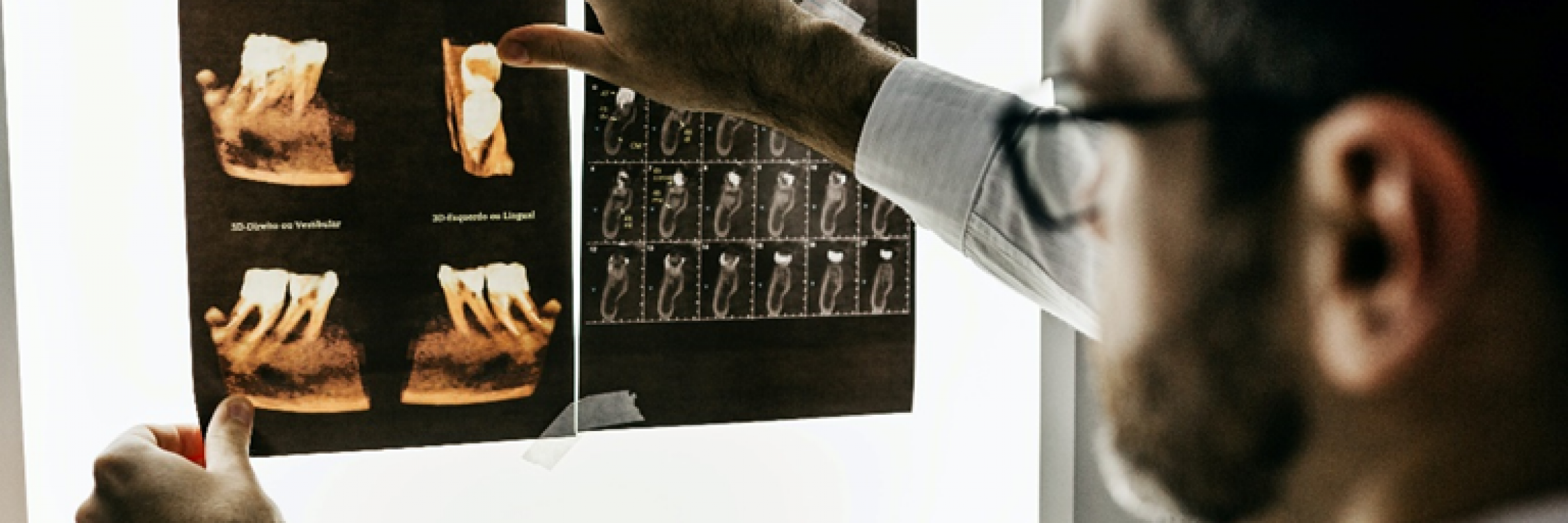
Claro acknowledges that bioprinting will help periodontal therapy advance
Periodontal (gum) disease: an annual cost estimated at 79 billion euros in Europe
Periodontal (gum) disease is extremely common. Severe periodontal diseases are found in 5–20% of middle-aged (35–44 years) adults in Europe, and up to 40% of older people (65–74 years). Diseases of the mouth are an expensive burden to health care services. The World Health Organization estimates that the treatment of dental diseases accounts for between 5% and 10% of total public health care expenditures in Europe (annual cost at 79 billion euros) [1].
A mouth disease that can lead to dental surgery
Generally, the development of periodontitis begins with plaque — a sticky film composed mainly of bacteria. Gingivitis, an initial stage of periodontal disease, is treatable without sequelae by good oral hygiene. If not treated gingivitis can evolve to periodontitis, an infection that damages the soft tissue and bone supporting the tooth. Ultimately, the affected teeth fall out. Advanced periodontitis may require dental surgery, such as soft tissue and bone grafting. In the case of soft tissue grafts, a small part of the tissue from the roof of the mouth (palate) or a donated soft tissue is attached to the affected site, preventing further gum recession. When the bone supporting the tooth is destroyed by periodontitis, small fragments of the person’s bone, synthetic, or donated bone are used to create a bone graft that will hold the tooth in place [2].

The role of bioprinting in periodontal therapy
In a very innovative way, tissue engineering shows the potential to promote bone-ligament complex regeneration to treat damages in periodontia. Rasperini et al. (2015) reported the suitability of bioprinted image-based scaffolds for periodontal reconstruction. His work reported the first human case of treatment of a large periodontal bone defect with a 3D printed bioresorbable patient-specific polymer scaffold and signalling growth factor [3]. More recently, Raveendran et al. (2019) used gelatin methacryloyl (GelMA) to bioprint the fibrous joint that anchors the root of the tooth to the alveolar bone socket of an extracted tooth. The best printing conditions selected in Raveendran’s study for cell viability studies were: 12.5% (w/v) GelMA through a 25 G dispensing needle using a 135 ± 10 kPa printing pressure at 11 ± 1 mm/s printing speed. The crosslinking conditions ([LAP]=0.05% (w/v), UV irradiation time of 20 s) applied by the authors were proven of acceptable cytocompatibility [4].
Our Claro team is confident that the recent studies in periodontal engineered tissues will help periodontal therapy advance. Claro has developed gelatin-based bioinks that can help researchers bioprint complex periodontal designs. Our patented technology overcomes clogging, and poor shape-fidelity observed in extrusion-based systems while printing with regular GelMA products. In addition, our GelMA (ClaroBGI800) is produced under high-quality standards of purification, ensuring ultra-low levels of impurities such as methacrylic acid and guaranteeing batch to batch consistency.
References
[1] WHO - Reginal Office for Europe, “Fact sheet on oral health and sugars intake,” 2018.
[2] Mayoclinic, “Periodontitis,” 2021. [Online]. Available: https://www.mayoclinic.org/diseases-conditions/periodontitis/symptoms-causes/syc-20354473. [Accessed: 17-May-2021].
[3] G. Rasperini et al., “3D-printed Bioresorbable Scaffold for Periodontal Repair.,” J. Dent. Res., vol. 94, no. 9 Suppl, p. 153S–7S, Sep. 2015, doi: 10.1177/0022034515588303.
[4] N. Thattaruparambil Raveendran, C. Vaquette, C. Meinert, D. Samuel Ipe, and S. Ivanovski, “Optimization of 3D bioprinting of periodontal ligament cells,” Dent. Mater., vol. 35, no. 12, pp. 1683–1694, 2019, doi: 10.1016/j.dental.2019.08.114.